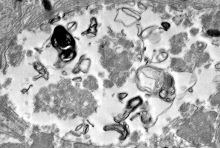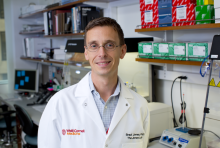Based in New York City, Weill Cornell Medicine Enterprise Innovation engages and collaborates with Weill Cornell Medicine faculty and trainees while fostering alliances with leaders in the biomedical industry and business and investment community. Our focus is to translate the application of emerging science and new technologies into world-class medical breakthroughs.
Integrating Weill Cornell Medicine’s different teams and resources under a single, united organization, Enterprise Innovation encompasses the entire spectrum of an effective innovation ecosystem. We offer unique opportunities for faculty and trainees to transform their research into medical advances through collaborations including access to the Sanders Tri-Institutional Therapeutics Discovery Institute.
Enterprise Innovation brings together the power of industry-leading translational research and clinical care combined with top-tier business development expertise to accelerate innovation to market. Our leading technology portfolio encompasses major pillars of biomedical innovation.





A new preclinical model offers a unique platform for studying the Parkinson’s disease process and suggests a relatively easy method for detecting the disease in people, according to a study led by Weill Cornell Medicine researchers.
